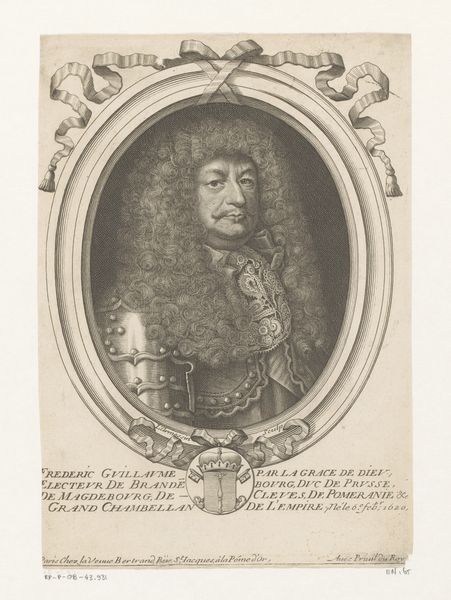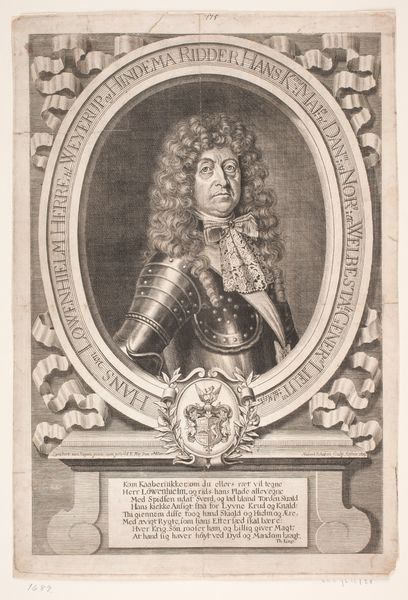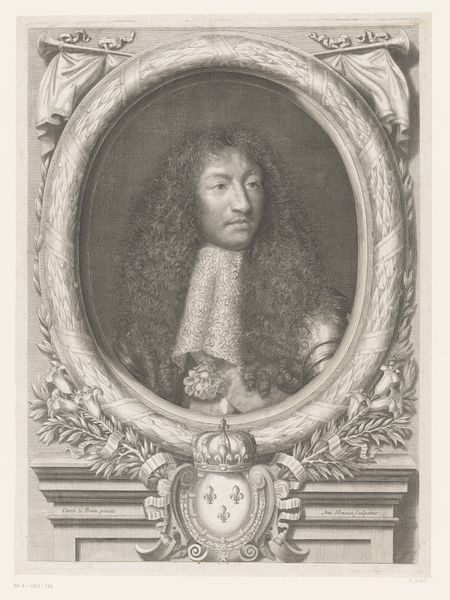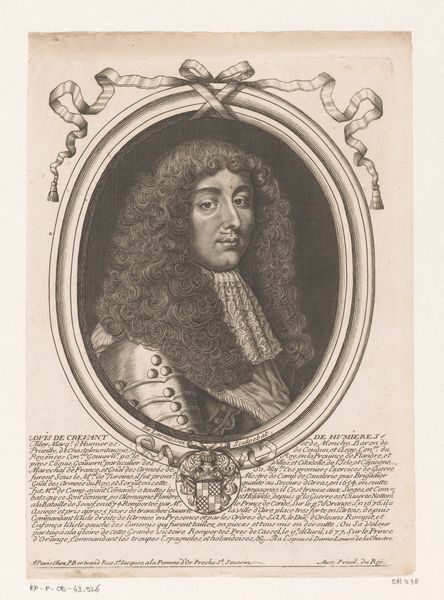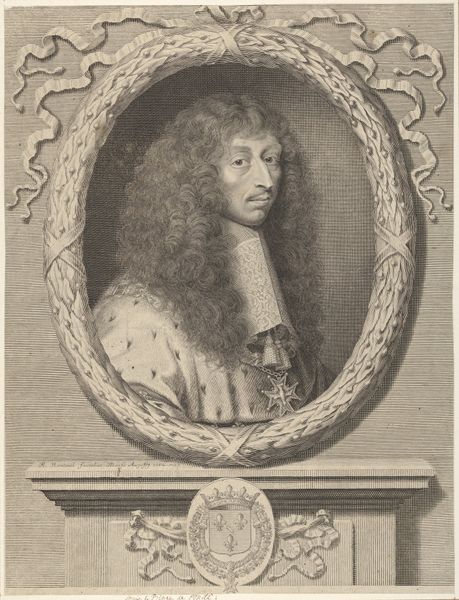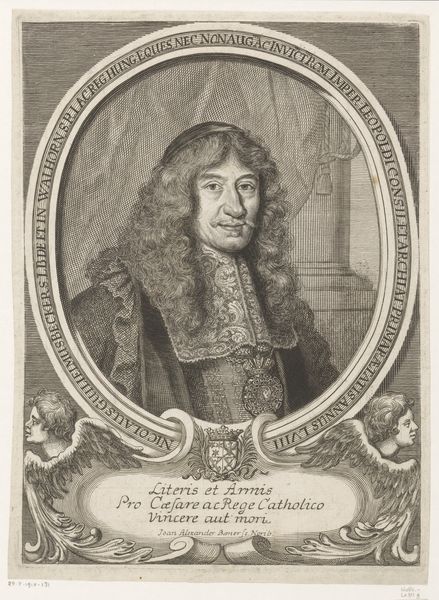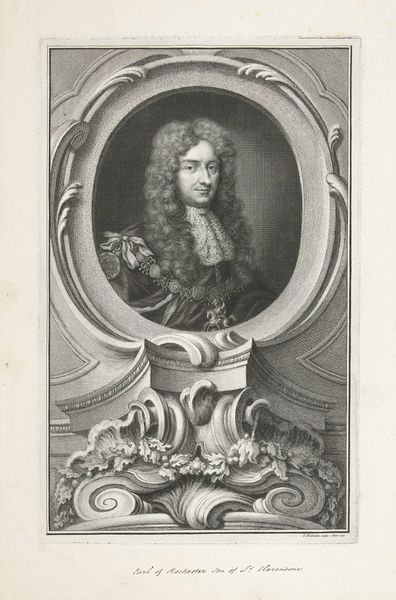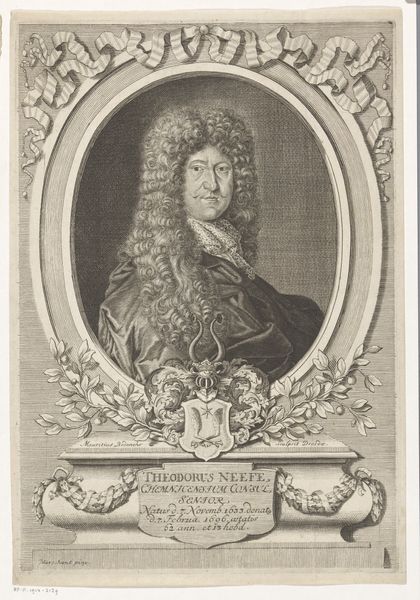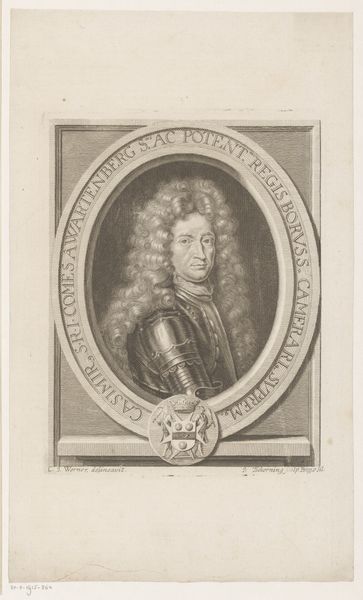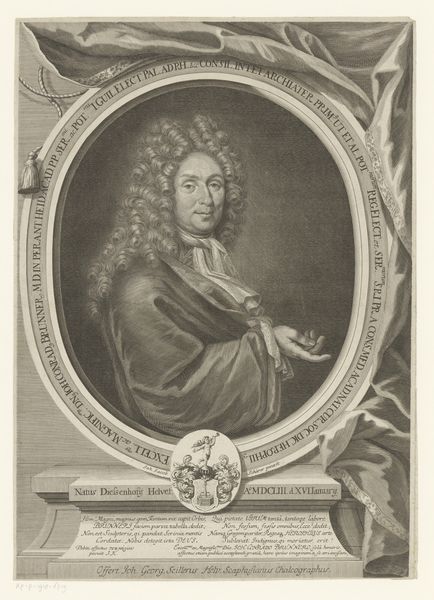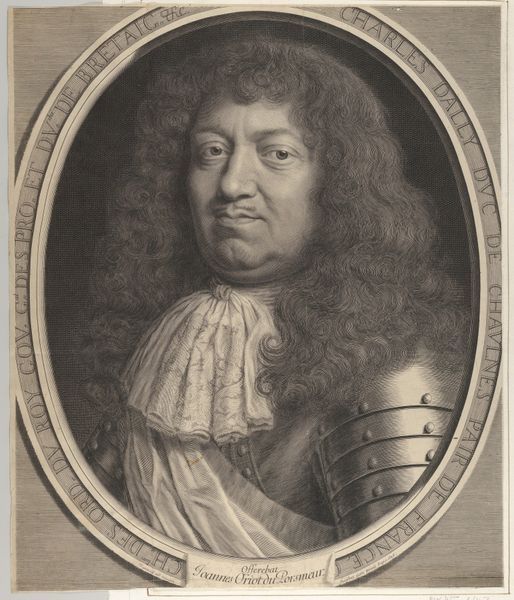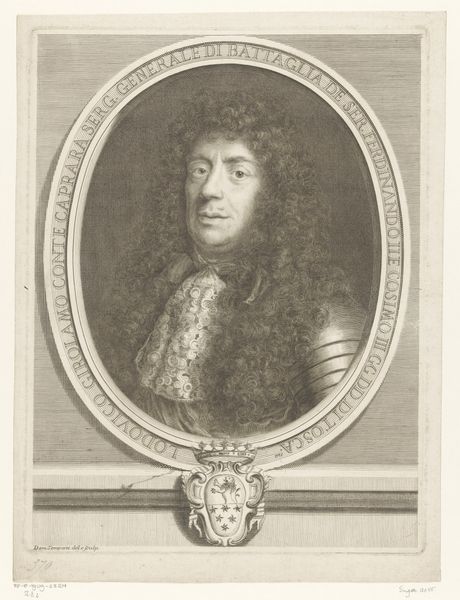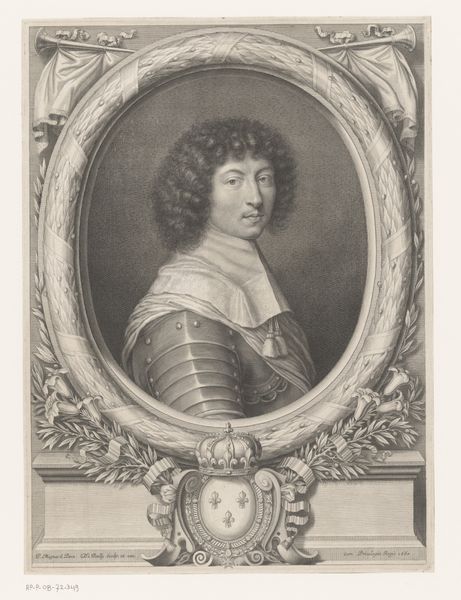
print, engraving
#
portrait
#
baroque
# print
#
old engraving style
#
charcoal drawing
#
figuration
#
line
#
history-painting
#
engraving
Dimensions: height 378 mm, width 295 mm
Copyright: Rijks Museum: Open Domain
Editor: This is "Portret van Lodewijk II van Vendôme," a print by Antoine Masson, dating somewhere between 1646 and 1700. The detail is really remarkable! What can you tell me about this work? Curator: Looking at this engraving through a materialist lens, it's fascinating to consider the socio-economic context of printmaking in the Baroque era. The very act of creating an engraving – the labor, the skill involved in meticulously transferring an image onto a copper plate, and the distribution of the final print – speaks volumes about class and consumption. Think about who commissioned it, who made it, and who could afford it. Editor: So, it’s less about just who it depicts and more about… how it came to be? Curator: Precisely. Consider the social function of such a portrait. What message was Masson trying to convey, and to what specific audience? Every stage, from the production of ink to the physical distribution, held societal relevance. It highlights the means through which aristocratic power and influence were not only documented but actively constructed and circulated within the broader societal structure. It’s also interesting to examine the shift in perception that printmaking allowed; making the Duke less like an ethereal untouchable figure, but an owned item, even something to be consumed. Editor: That’s a perspective shift for sure! So instead of seeing it as just art, it’s almost a form of early mass media? Curator: Exactly. The material conditions of its production and dissemination were integral to its meaning. Editor: I see what you mean. It makes me think differently about the value of prints in that period, seeing them not just as art objects, but as products of labor, material, and class. Thanks for pointing that out! Curator: My pleasure. Considering art through its material conditions really opens up so many interesting questions, doesn’t it?
Comments
No comments
Be the first to comment and join the conversation on the ultimate creative platform.
